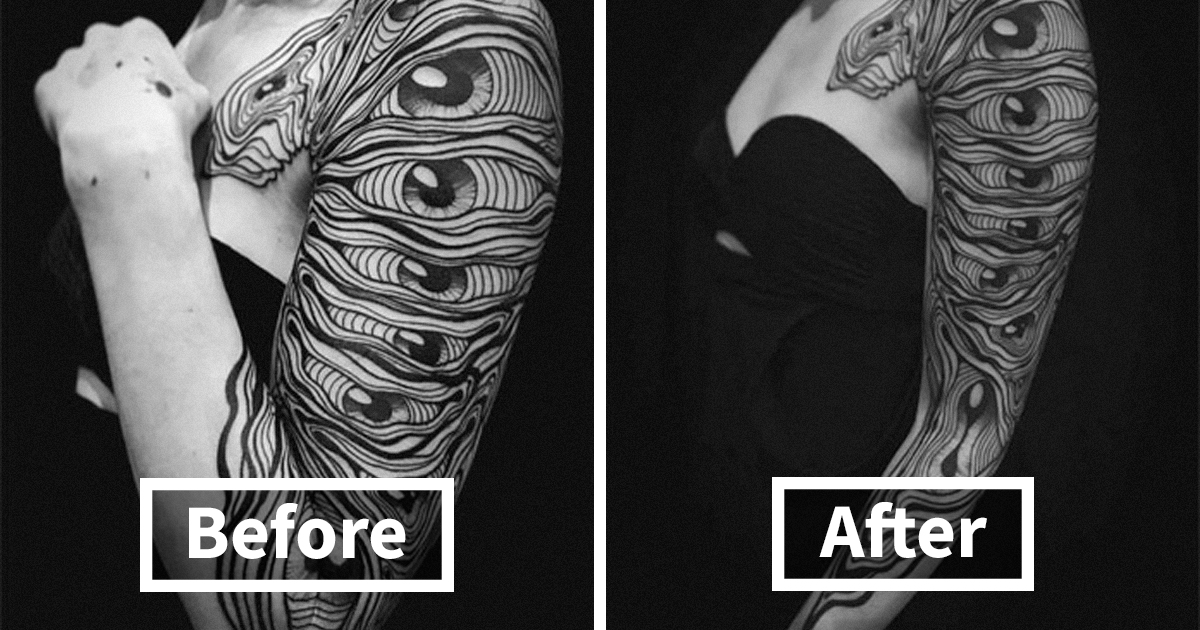Suminagashi, meaning “floating ink” in Japanese, is a centuries-old art form that translates beautifully into modern tattooing. Originating in Japan around the 12th century, it was traditionally practiced on paper using water to create mesmerizing marbling effects. In the modern tattoo world, this technique has been embraced by those seeking unique, abstract designs with deep cultural significance.

History of Suminagashi
The Suminagashi technique involves floating ink on water and manipulating the liquid to create intricate, swirling patterns. These patterns are then carefully transferred onto paper or fabric. In tattooing, the same inspiration is used, with artists recreating this fluidity using needle and ink on skin. The practice of water marbling became a symbol of Japanese artistry and mindfulness, embodying the beauty of impermanence.
Why Suminagashi Tattoos are Unique
Unlike more rigid designs, Suminagashi tattoos capture the unpredictable and flowing nature of water. Each tattoo is distinct, as the patterns can never be perfectly replicated. This element of randomness makes Suminagashi tattoos a perfect choice for individuals seeking custom, one-of-a-kind body art. They are also often minimalist, making them ideal for people who prefer subtle, elegant designs over traditional bold tattoo styles.
Popular Designs and Their Meanings
While Suminagashi tattoos primarily focus on abstract ink patterns, they often carry symbolic meanings associated with water—fluidity, adaptability, and balance. Some popular design ideas include:
- Full-arm Suminagashi sleeves: Mimicking the flow of water around the arm, these designs are often intricate and captivating.
- Minimalist black and gray ink patterns: These are subtle, elegant designs that often symbolize inner peace and reflection.
- Suminagashi-inspired back tattoos: The large canvas of the back allows for more elaborate, detailed designs.
Cultural Significance
Suminagashi reflects Japanese philosophies such as Wabi-Sabi (the beauty of imperfection) and Zen. It symbolizes the transient nature of life, as water marbling represents change and flow. Incorporating this ancient technique into tattooing pays homage to its rich cultural heritage while creating an innovative form of self-expression.
Suminagashi Tattoos in Modern Culture
Today, Suminagashi tattoos are gaining popularity, especially among those who appreciate Japanese art and history. As tattoo artists become more skilled at recreating the flowing patterns, Suminagashi tattoos are moving beyond Japan and being embraced by global tattoo enthusiasts.
How to Choose a Suminagashi Tattoo
When considering a Suminagashi tattoo, it’s important to find an artist experienced in Japanese tattoo styles. The patterns, while seemingly simple, require skill to ensure the design flows naturally with the contours of the body. Customization is key, as no two Suminagashi tattoos should be alike, reflecting the individuality of the wearer.
Conclusion
Suminagashi tattoos offer a blend of ancient Japanese artistry and modern tattoo techniques. With their unique fluid patterns and deep cultural roots, they are perfect for individuals seeking meaningful, one-of-a-kind designs that stand out. As interest in minimalist and abstract tattoos continues to grow, Suminagashi tattoos will likely remain a timeless and innovative choice in body art.